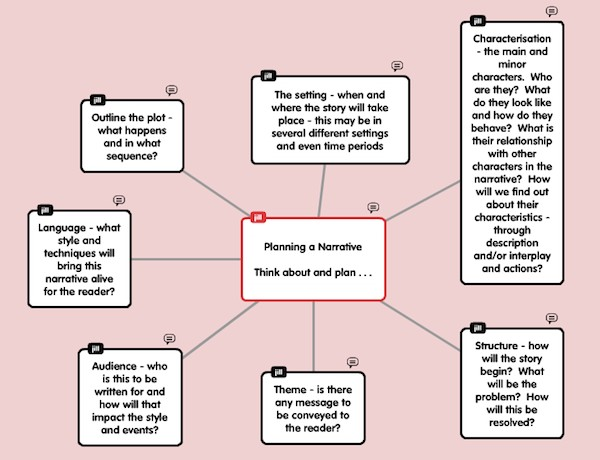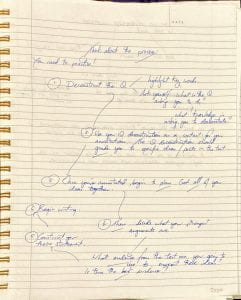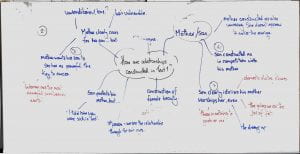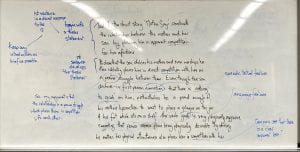Below is an exemplar response, written by a student in a WACE examination, which demonstrates what an effective response might look like:
Question
Explain the visual element that had the greatest effect on your interpretation of this image.
Response
Text 3 is an image that is dominated by body language. The domineering body language and expression of the presumed queen and the bearded man’s subordinate position suggests that this woman is someone who should not be meddled with.
The queen’s body language simply oozes power. Her face is a half-scowl and half grin which suggests that she is a dangerous and powerful person indeed and that she knows how to use her power to destroy anyone in her path. He hand is clawing at the man’s chest. His heart is essentially in her grasp, putting her in a position of great power and influence over him and insinuating that he is as under her control as she has him in the palm of her hand. Her figure towering over him also signifies that she is the one in control here, which is a perspective we don’t often see in today’s media. The bearded man’s body language is quite the opposite of the queen behind him. He looks frightened and his position below her suggests obedience and a subordinate status. His glance to the side is either a search for help or a futile attempt at protest towards the domineering queen behind him.
The way in which all of this body language present in the text points to the queen being a major power in the series is very obvious and is rather interesting in that not a lot of women in television are presented as such.
Things to Note
- The opening sentence immediately offers a proposition in response to the question without restating it. Second sentence offers a clear interpretation of the text based on ‘body language’ as the most influential visual element.
- The candidate’s use of phrases such as ‘oozes power’ and ‘half-scowl and half-grin’ and ‘clawing at the man’s chest’ contribute to the assured voice being adopted. There are many examples that follow of really strong wording related to the suggested meaning of aspects such as the interaction and placement of subjects in relation to each other.
- Every additional sentence refers to a different example of body language and its contribution to the overall interpretation.
- The shorter sentences included assist the candidate to communicate clear points and to do so succinctly.
- Terms such as ‘suggests obedience’ and ‘subordinate status’ work very nicely here to summarise and reiterate the interpretation of the text.
- The brief conclusion doesn’t really add too much to the central argument with the exception of its final observation that the representation is atypical. It could’ve easily been tacked onto the end of the previous paragraph without penalty, but it works reasonably well here in terms of driving home the interpretation.
Please also note the formative feedback in the attached document below:
Comprehending Formative Feedback and Exemplar Response







